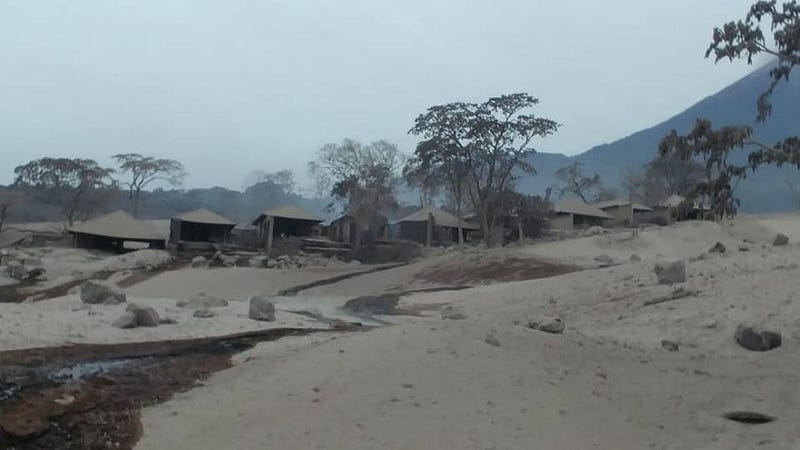One of the most active volcanoes in Guatemala, Volcan de Fuego, killed many villagers that were hit by lahars and pyroclastic flows as reported by the media that day, June 3.
As the rescue continues on site, many of us have made tough questions about the previous events and if this could be prevented. As a rescuer I now how difficult is a rapid response in conditions like the ones we had last Sunday. So I got in touch with David Rothery, a vulcanologist that was already quoted by BBC, and elPeriódico (a local newspaper) to learn about his view.

In order to understand what we (as Guatemalans) can do to prevent deaths in a volcanic eruption like the one on Sunday, I asked on two main subjects: Response and Prevention.
Response
How much time do a village has before lahars and pyroclastic flows hits them?
DR: Pyroclastic flows can travel at more than 100 km per hour, so they can reach 10 km from the volcano only 6 minutes after the eruption.
Lahars move more slowly, but can travel long distances. Heavy rainfall on ash that is on the slopes Fuego AFTER the eruption can cause lahars.
Why do you think CONRED didn´t warn villagers that morning?
DR: There was too little time to warn people after the eruption that caused the pyroclastic flows.
However, there was a lahar on 17 May and explosions causing small pyroclastic flows during 19–21 May.
INSIVUMEH were monitoring the activity. I do not know what advice they gave to Conred.
In most countries, it is the responsibility of the local volcanologists to advise the civil defense organization on the risk and hazards, and it is the responsibility of the civil defense organization to make a decision about evacuation.
In some countries an evacuation would have been ordered, or at least advised, within a 5 or 10 km radius of the volcano. For example, Indonesia frequently does this around volcanoes such as Agung (on the island of Bali) and Sinabung (on Sumatra).
However, poor farmers usually feel that they cannot afford to leave their land, and if they are forced to evacuate but no eruption happens they can lose their trust in the authorities. It is a very difficult situation to manage, and it is impossible to get it right every time.
Prevention
How can any people living close to any of our volcanoes can identify danger alerts?
DR: Watch the excellent videos (above) about volcanic hazards that are on the internet. Be aware of the dangers. I saw many videos on Twitter of the Fuego pyroclastic flows, recorded on iPhones by people who would have been wiser to get out of the danger zone immediately.
What instruments could help to warn about an eruption?
DR: The most useful instruments are seismometers, which can record the movement of magma or gas inside a volcano. These can usually (but not always) tell us when activity below ground is approaching the surface, and can give a few hours or days warning of a likely eruption. I know Insivumeh has seismometers near Fuego, but I expect they would like to have more. Other instruments that can detect the ground deformation (swelling) of a volcano that sometime happens before an eruption, or to measure the change in the amount of composition of the gas being emitted can also give warning signs.
How can anyone determine danger on this areas close to the volcanoe?
DR: If anyone is within 10 km of a volcano that explodes and produces an ash column, they should get on to high ground within a few minutes, because a pyroclastic flow might be coming their way. You are safer on high ground than on flat ground or in a valley.
In order to understand the events during that day, why the response to warns worked so slow?
DR: I have too little information to comment in any more detail about this.
Facts about th situation
As an excercise of fact checking with an expert I asked Rothery to take a look at the article he was quoted so he can explain better about it. So he checked and send me his views.

“Cabañas dijo que los lugareños recibieron constantes capacitaciones y participaron en simulacros para aprender cómo responder ante una emergencia, pero aseguró que el incidente fue demasiado rápido para seguir todos los procedimientos.”
DR: I have no reason to dispute this.
“No obstante, David Rothery, geólogo de la Open University de Inglaterra, opinó que las autoridades debieron asumir medidas precautorias tomando en cuenta que el 17 de mayo pasado se registró un lahar de 25 metros de largo que descendió por la ladera del volcán. Además, entre el 19 y 21 de mayo se observaron explosiones y nubes de cenizas volcánicas.”
DR: It is easy for me to say this with hindsight (AFTER the eruption). It was much more difficult for Insivumeh and Conred, who have my sympathies, to realise this BEFORE the eruption
Lessons from Volcán de Fuego eruption
What lessons can we learn? Future eruptions could also “ser demasiado rápido para seguir todos los procedimientos” (“happen too quickly to follow all procedures”). So maybe the procedures need to be revised. Would it be possible (could it be afforded?) in Guatemala to evacuate a zone around a volcano as a precaution, like they do in Indonesia?
An evacuation is expensive and very disruptive, and sometimes after an evacuation there is no eruption. If this happens too often, the population may lose trust in the authorities. There will always be risks involved in living close to an active volcano.


Related Posts
Los accidentes colectivos pueden prevenirse
feb. 13, 2025
Podcast
nov. 05, 2018
Sistema de Alerta Móvil
jun. 19, 2018